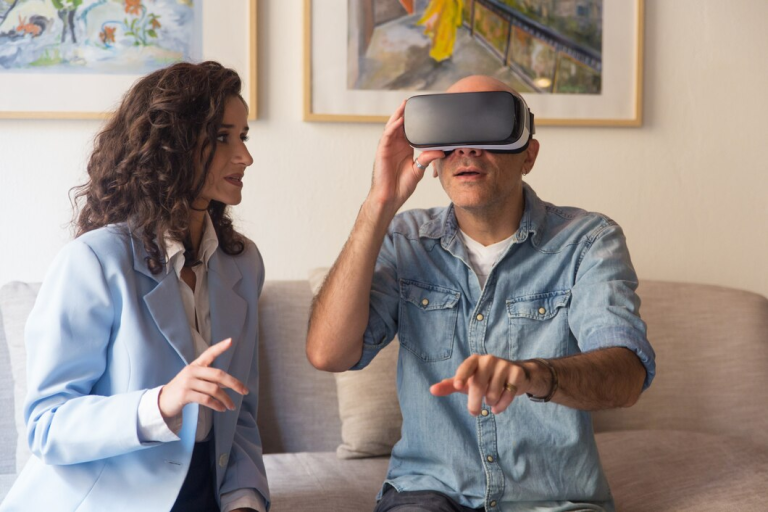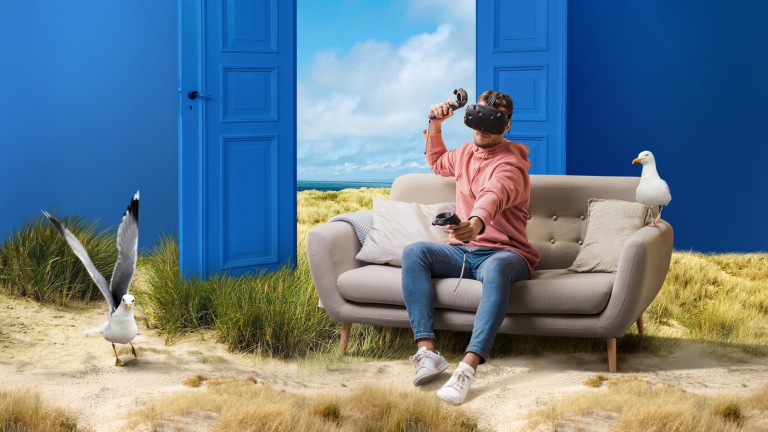Virtual Reality (VR) is revolutionizing the architectural industry, enabling seamless collaboration and enhanced client engagement, even from a distance. As remote work becomes increasingly prevalent, the adoption of VR for architectural consultations offers a glimpse into a future where distance is no longer a barrier to creativity, precision, and collaboration.
Let’s explore how VR is shaping the future of remote architectural consultations and why it’s a game-changer for architects and clients alike.
Breaking the Barriers of Distance
Traditionally, architectural consultations required in-person meetings to review plans, discuss designs, and finalize project details. With VR, these sessions can now occur in immersive, virtual environments, bringing architects and clients together no matter where they are located.
Key Benefits:
- Global Collaboration: Architects can connect with clients and teams worldwide, broadening their reach.
- Real-Time Feedback: Clients can explore designs in VR and provide instant feedback, reducing delays.
- Cost Savings: Eliminates travel expenses and associated logistical challenges.
Pro Tip: Use VR platforms with integrated communication tools to streamline remote consultations.
Enhanced Client Engagement
One of VR’s greatest strengths is its ability to immerse clients in their projects. Unlike traditional 2D blueprints or static 3D renderings, VR allows clients to experience designs as if they were physically present.
How VR Enhances Engagement:
- Immersive Walkthroughs: Clients can virtually walk through spaces, gaining a realistic understanding of layouts and dimensions.
- Interactive Features: Clients can adjust design elements, such as lighting or materials, in real-time.
- Better Understanding: VR eliminates the ambiguity of technical drawings, making concepts accessible to non-architects.
Did You Know? Studies show that VR increases client satisfaction by 85% due to its immersive and interactive nature.
Streamlining Design Iterations
Revisions are an integral part of any architectural project. VR accelerates this process by allowing architects and clients to visualize changes instantly.
Advantages for Design Iterations:
- Dynamic Modifications: Test multiple design options in a single session.
- Error Reduction: Identify and resolve potential design flaws early in the process.
- Collaborative Tools: Share VR models with stakeholders for collective input.
Pro Tip: Pair VR tools with BIM (Building Information Modeling) software for an even more efficient workflow.
Accessibility and Inclusivity
VR makes architectural consultations more inclusive by accommodating clients with diverse needs. From individuals with mobility challenges to those who prefer remote engagements, VR ensures everyone can participate fully.
Inclusive Features:
- Remote Access: Clients can join VR consultations from the comfort of their homes.
- Customizable Environments: Tailor VR settings to meet specific client preferences.
- Enhanced Visualization: Clearer representations make design concepts accessible to all.
Leveraging Advanced VR Tools
The future of remote architectural consultations relies heavily on cutting-edge VR tools. Platforms like Enscape, Twinmotion, and IrisVR are already transforming how architects collaborate with clients.
Popular VR Tools for Architects:
- Enscape: Integrates with CAD software for real-time visualization.
- Twinmotion: Offers intuitive tools for creating lifelike environments.
- IrisVR: Specializes in immersive VR walkthroughs for architectural projects.
Pro Tip: Stay updated on emerging VR technologies to remain competitive and innovative.
Sustainability Benefits
Remote consultations with VR contribute to environmental sustainability by reducing the need for travel and physical prototypes.
Green Advantages:
- Lower Carbon Footprint: Fewer in-person meetings mean reduced travel emissions.
- Digital Prototypes: Eliminate waste associated with physical model creation.
- Efficient Resource Use: Streamline the design process, minimizing unnecessary iterations.
The Future is Here
The integration of VR into architectural consultations marks a pivotal shift in how architects and clients collaborate. With benefits ranging from enhanced engagement to environmental sustainability, VR is set to become an indispensable tool for the industry.
At VRchitects, we’re committed to pushing the boundaries of architectural innovation. Are you ready to explore the future of remote architectural consultations? Let’s build a world where creativity knows no bounds.






